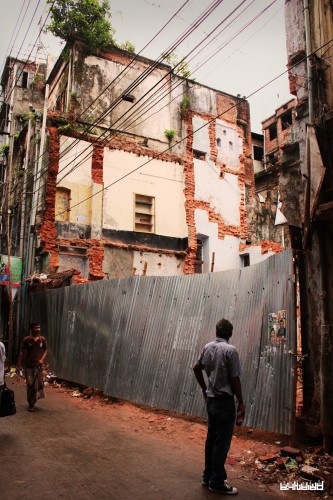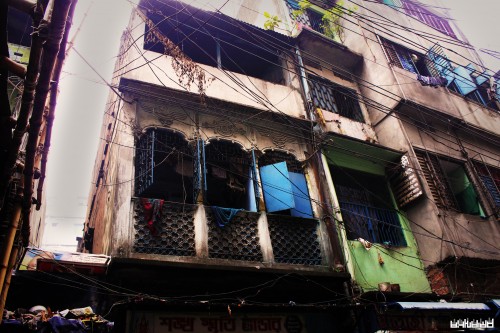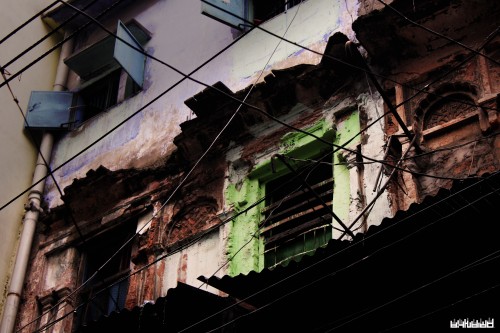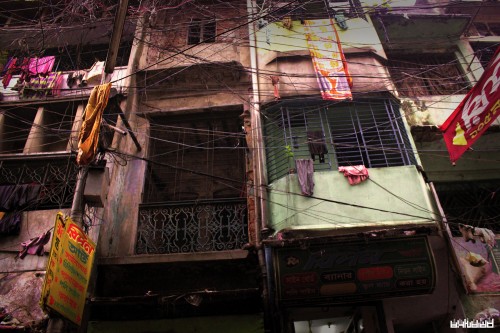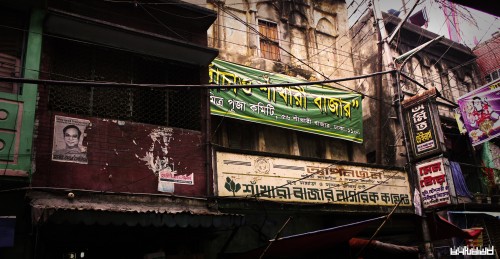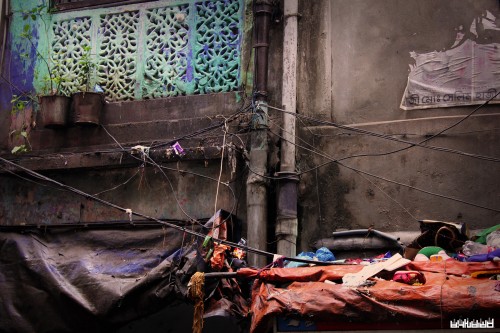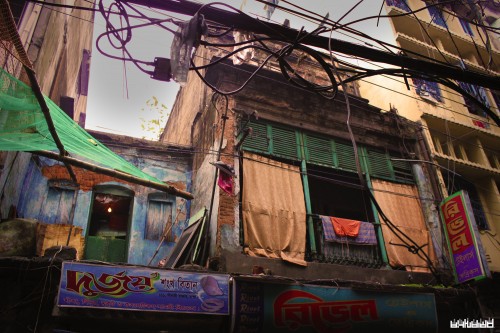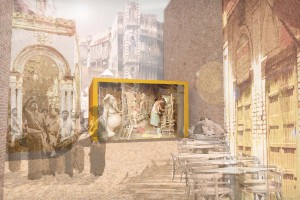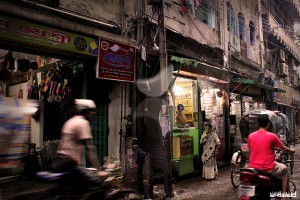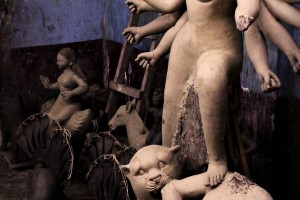As we approach the future, we have a strong urge to remember and obsessively conserve every object of the past. This is where Michael Guggenheim, a present day sociologist, brings up one of the relationship between building and time, where ‘buildings represent time’ itself. It is important to understand the role of memory in this context. Memory has the ability to ‘recreate or re-enact former states’ from the various objects or elements that are present in the current time and space. Personal memory can be instigated by an object, while collective memory acts as a link to the past. Therefore, we are almost dependant on objects to justify and validate a memory. I can only imagine the memories trapped in the old buildings in Shakhari Bazar and how they speak to the locals who base their existence on what they have learned from their ancestors.
Just like science requires a ‘network of actants to stabilize facts and thus render them true’, object–based memory uses present ‘memory and uses’ of an object to link to that of the past to make the memory more concrete. When I fly back to Bangladesh, and open my luggage for the first time, I can smell the distinct ‘foreign’ odour that is very different from the ‘natural smell of Bangladesh’. That ‘foreign’ odour reminds me of my childhood when my ‘foreign’ relatives would open their luggage to give me my ‘foreign’ present. Since then, I seem to have automatically connected that odour with the pleasure of receiving surprise presents. That similar odour from that luggage from a ‘foreign’ country, even though it’s my own luggage, brings a smile, filled with happy memories, to my face. But the problem with personal memory is that the connection between the object and the memory is so vague that it becomes very hard to explain to the outsiders, making it impossible for another to challenge the memory. Therefore, it is important to understand ‘the role of a function’ and the ‘usability’ of an object. Michael argues that function serves an important role to explain the object and its association with the memory.
An object’s memory can be controlled both through isolation and multiplication of its functions. Although isolation is generally seen as the ‘death of objects’, Michael believes that isolation stabilizes the object and controls further formation of memories, just like the case of an object displayed in a museum. With multiplication, control of individual objects is not necessary and therefore depreciates the quality of personal memory, but at the same time encourages a network of collective memory. But, unlike objects, buildings cannot be isolated as they are singular and can perform various functions. Even though the building itself does not change, the change in environment with time and the function it carries out, can influence the buildings existence. What makes architecture also different is its ability to carry out various functions by various individuals at the same time, therefore creating a network of multiple memories at the same time. But if the building’s function is converted, it ceases to act as the catalyst for past memory and starts serving as ‘stabilization for contemporary meaning and use’. To refer to my previous example, if that same luggage acted as a paper weight instead of a carrier to transport objects, I would have not been able to smell the ‘foreign’ odour that came out of the belongings it carried, and therefore, might have failed to instigate my concrete personal memory of receiving presents. It is important for the presence of the object to remain the same. However when the function of that object, which appeals to our various senses, remains the same it makes the memory even more concrete and vivid. This idea can be carried on when we restore an existing heritage residential building and change it to function as a bank. The previous occupant will have difficulty recalling the memories associated with certain rooms in the building, as the functions carried out in each room might have changed. Therefore, even after massive physical manipulation, I could say Shakhari Bazar’s identity has remained the same as the identities of their occupants have seen little change.
Since 1608, the Shakhari Bazar has restructured itself to function for the modern age. The street went from supporting elephant rides to facilitating 20th century vehicles. Various modern demands such as electricity, water supply, and other amneties have been overlaid, adding to the disorganization and causing more congestion and traffic. Now, Shakhari Bazar is at the crossroads. It has to decide between upholding the existing culture of the street, and trying to bring about more change to incorporate the modern needs of the society. It was announced a National Heritage site in February 2009 by Rajdhani Unnayan Kartripakkha, but the indifference of the governing authorities is turning the historic neighbourhood of Old Dhaka into a pile of wreckage. The life of the people living in the neighbourhood is at stake as no step for the restoration or renovation of the old buildings has been taken. Around 20,000 residents of Shakhari Bazar are now living in a dangerous situation while they were barred from modifying or developing any parts of the area on their own. Policy and lack of coordination among different authorities have stalled preservation of Shakhari Bazar. It was this onslaught of drastic changes that almost fueled the local conservatives to be nostalgic. The locals who legally own the buildings go on regular strikes against the government as they are deeply against this decision to relinquish rights to their ancestral property to become part of the Government owned historical site. To the locals, preserving their ancestral memory is important, but it certainly does not take precedence over the lives of their children. The locals have started to panic and demolish the historical buildings before the Government can take over their property. This 8 years of tension between the government and Shakhari Bazar locals is only growing stronger with time.
Prianka Smita is a graduate student at the University of Waterloo School of Architecture. She grew up in the military environment of the east in which she was expected to serve her country. Currently in the second year of her masters studies, she is developing her thesis entitled Render Authenticity which enables her to engage in a dialogue between her passion for artistry and devotion to the progress of her native country. This pursuit brought her to return to Bangladesh in the summer of 2014 to conduct research. She says of her daily working methods, “I doodle when I want to organize my most obscure thoughts, listen to music when I want to be inspired, and write when I want to have a conversation with myself.”
For more about her travel and research visit her website priankasmita.com and stay tuned for future posts.
Prianka Smita is a graduate student at the University of Waterloo School of Architecture. She grew up in the military environment of the east in which she was expected to serve her country. Currently in the second year of her masters studies, she is developing her thesis entitled Render Authenticity which enables her to engage in a dialogue between her passion for artistry and devotion to the progress of her native country. This pursuit brought her to return to Bangladesh in the summer of 2014 to conduct research. She says of her daily working methods, “I doodle when I want to organize my most obscure thoughts, listen to music when I want to be inspired, and write when I want to have a conversation with myself.”



